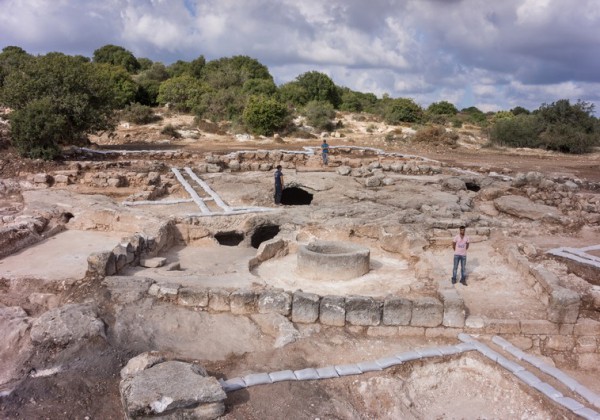Art World
1,500-Year-Old Monastery Discovered in Israel
Ruins dating to the Byzantine period uncovered in Beit Shemesh.

Ruins dating to the Byzantine period uncovered in Beit Shemesh.

Henri Neuendorf

A large, well-preserved compound believed to have been a monastery dating to the Byzantine period (330-638 CE) has been discovered in Beit Shemesh, Israel, the Jerusalem Post has reported.
The Israel Antiquities Authority announced on Thursday that an archaeological survey commissioned by the Israeli Ministry of Construction and Housing uncovered the remarkable find. In a joint statement, the project’s co-directors Irene Zilberbod and Tehila Libman said: “Blocked cisterns, a cave opening, and the tops of several walls were visible on the surface. These clues to the world hidden underground resulted in an extensive archaeological excavation there that exposed prosperous life dating to the Byzantine period, which was previously unknown.”
Surrounded by an outer wall, the compound is divided into living quarters and a large scale agricultural facility. The facility features an industrial-scale olive oil press and a wine press featuring two floors on which the grapes were pressed using workers’ feet and a huge collecting vat. Their scale was key to better understanding the function of the facility itself and that of the compound, experts revealed. “The impressive size of the agricultural installations shows that these facilities were used for production on an industrial scale, rather than just for domestic use,” Zilberbod and Libman explain in their statement.
In the living quarters, some of the excavated rooms feature beautifully preserved, colorful mosaic-paved flooring. In one such room, a multi-colored mosaic decorated with a cluster of grapes and flowers within a geometric frame was discovered. An adjacent room’s staircase leads to an unpreserved second floor.
Inhabited by Monks
The archaeologists believe that the facility was inhabited by monks and was used as a monastery, despite finding no evidence of religious worship. “We did not find a church at the site or any other unequivocal evidence of religious worship; nevertheless, the impressive construction, the dating to the Byzantine period, the magnificent mosaic floors, window and roof tile artifacts, as well as the agricultural-industrial installations inside the dwelling compound, are all known to us from numerous other contemporary monasteries.”
The archaeologists believe that the facility was repurposed and altered by new inhabitants. “At some point, which we date to the beginning of the Islamic period (7th century CE), the compound ceased to function, and was subsequently occupied by a new resident. These people changed the plan of the compound and adapted it for their needs,” Zilberbod and Libman write. The Israel Antiquities Authority says that they plan to continue preservation of and research within the ancient site.